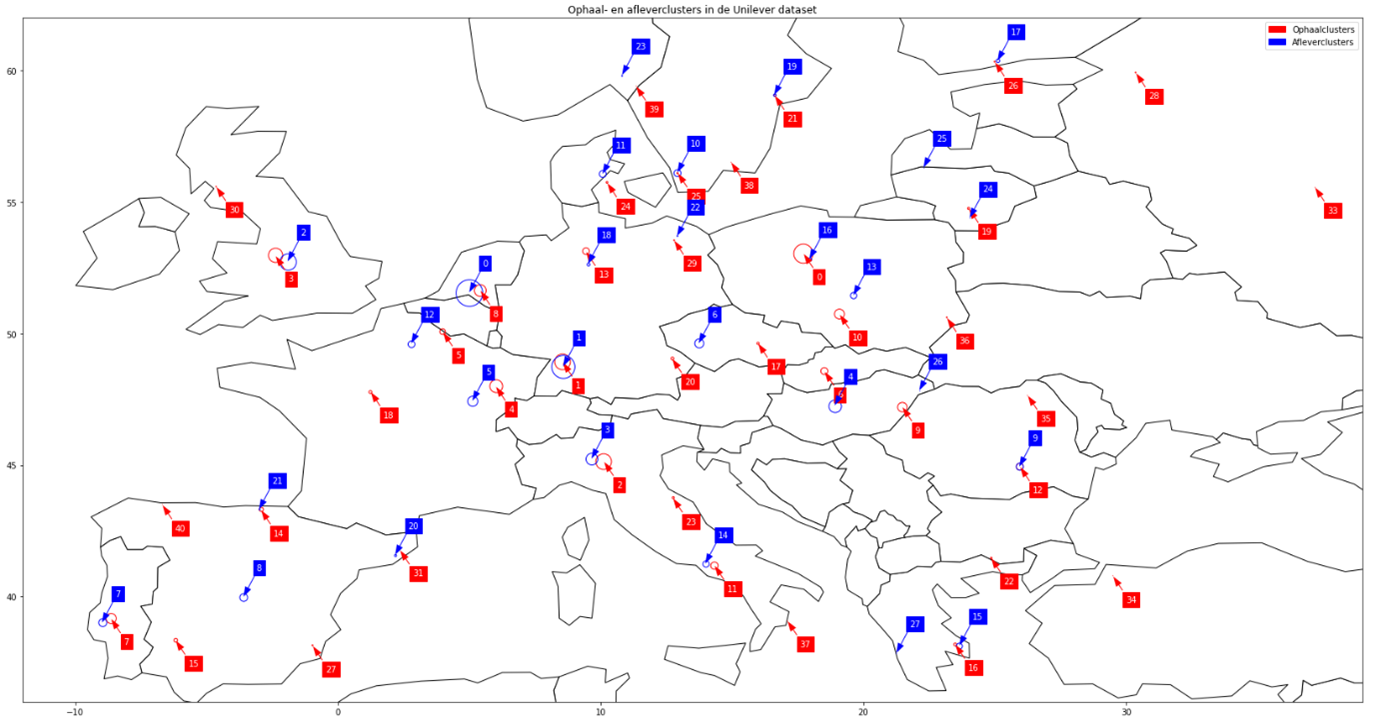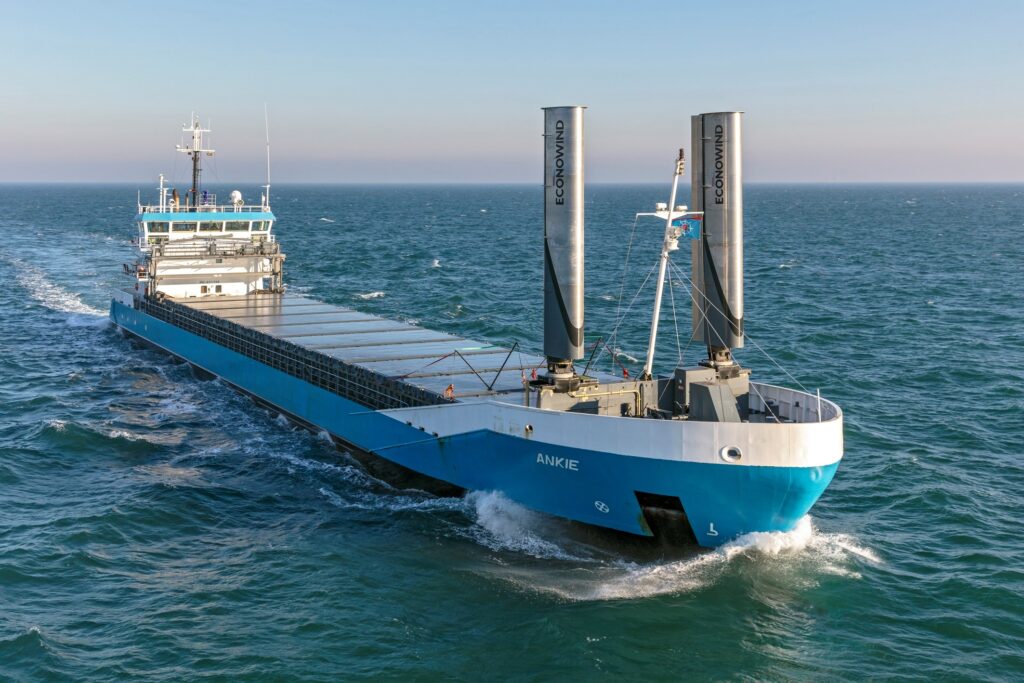Approach
A design workshop has been organised on the initiative of the TKI Dinalog ICCOS* project to crack these logistical challenges using artificial intelligence (AI), aiming to minimise the mileage driven with empty or partly empty trailers. This used the design canvas that was developed in the TKI Dinalog** project ‘Autonomous Logistics Miners for Small and Medium-sized Businesses’. The University of Twente provided an introduction to AI in logistics at the workshop. Bullit Digital also demonstrated how data science techniques work, using various applications and software developed for Emons. Deltago took the role of facilitator, helping keep the process moving forwards and studying the adoption process.
Using artificial intelligence
This use case primarily used reinforcement learning techniques, for which data is not a requirement. The initial data processing used unsupervised learning to reduce the number of locations to clusters.

The case was then worked out in detail and the playing field, scoreboard and software agent were developed. The playing field is defined by the locations in the dataset. The scoreboard measures how well the software agent is doing, assessing the length of the trip, the frequency and the proportion of trips made when empty. The software agent was developed in Python and trained in Google Colab. The interim results have been visualised and documented. The software agent uses a neural network in which the knowledge is stored. One-hot encoding is used to let the software agent ‘see’ the playing field and thus the sequence of the journeys. The software agent also remembers the last five steps. This lets the software agent make a weighted decision based on actions from the past. The advantage actor critic is then used as a technique for training the software agent. It is a technique that is appropriate for this logistical challenge because it can predict both the value of the scenario being played and the potential benefit of an action. That lets the software agent come up with a better estimate of the most appropriate action to take.
Results of the design workshop
- Forty-nine ideas were thought up for using AI at Emons.
- Five of those ideas were worked out in greater detail using the design canvas, with the Smart Tendering application then being chosen.
- A software agent was developed that helps the commercial planner find interesting routes.
- Knowledge of AI and an understanding of its broader application are now considerably better.
Important understandings
- Applications can be found easily and then converted into working prototypes in four to six weeks.
- It is essential to create a multidisciplinary group in which the user, the process, the data and IT are all represented.
- Visualising the steps needed for making the software agent and the documentation is important.
- The size of the step needed for use in practice is determined by the integration capabilities of the source systems.
Subsequent steps
As part of the ICCOS project, the proof-of-concept phase at Emons is being followed and a team is being put together. The project partners are developing a platform for reinforcement learning in the NWO (Netherlands Organisation for Scientific Research) Accelerator project, based on the Open Trip Model, along with supporting educational resources and training courses. Using this approach, the project partners have laid the foundations for more detailed fleshing out of AI applications in the logistics chain.
Parties involved
This case and proof of concept were carried out at Emons by Bullit Digital in collaboration with the University of Twente and Deltago.
More information
A detailed report on this use case is available on the TKI Dinalog website.
For general information, go to the ICCOS project page.
* ICCOS stands for ‘Industry 4.0-driven Supply Chain Coordination for Small and Medium-sized Enterprises’.
** TKI Dinalog is the consortium for top-quality expertise and innovation in which companies, centres of expertise and governmental authorities are working on the Topsector Logistiek (Logistics Key Sector) innovation programme.






